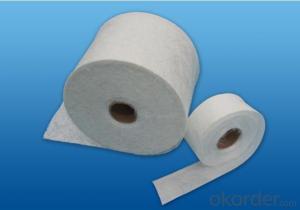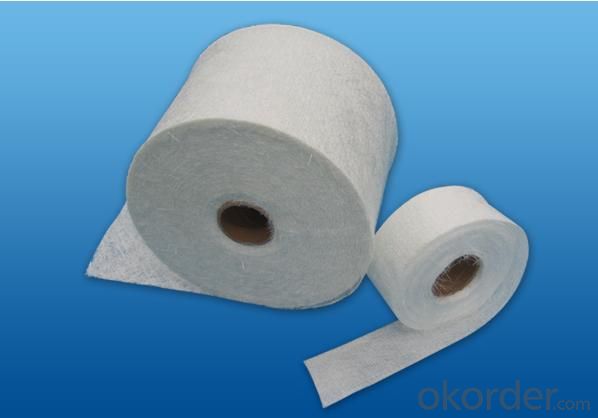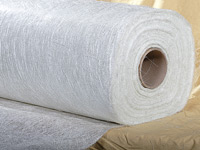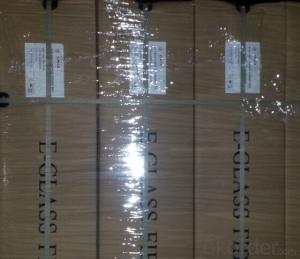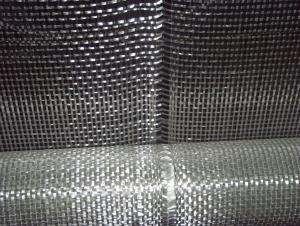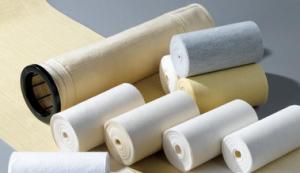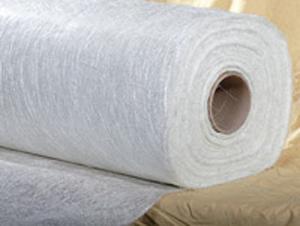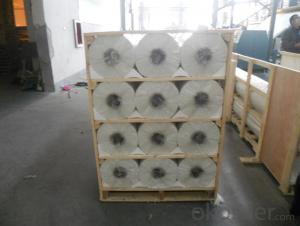Fiberglass Mat Tissue Stitched Mat 250g
OKorder Service Pledge
OKorder Financial Service
You Might Also Like
Structure of FIBERGLASS STITCHED MAT
The stitched mat is made of chopped strand which randomly dispersed and be stitched together by polyester thread. The width is available from 150-2400mm.Density of mat generally is 300-600g/m2.
The product is compatible with Polyester resin, vinyl ester resin, and epoxy resin.
Stitched mat is mostly primarily in pultrusion, RTM, filament winding, compression molding and hand lay up processes.
It is widely used in pipe lining, pultrusion section, storage tanks, FRP boat, insulation panel etc.
Main Features of FIBERGLASS STITCHED MAT
◎ Uniform thickness, good wet tensile strength retention.
◎ Good mould-ability, good drapability and easy operation.
◎ Good wet out speed and high efficiency in production.
FIBERGLASS STITCHED MAT Images
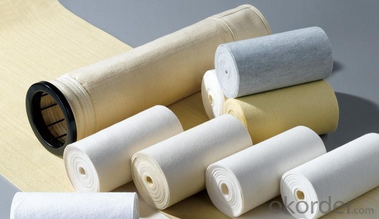

FIBERGLASS STITCHED MAT Specification:
Code | Density(g/m2) | Chopping layer density g/m2 | Width mm |
EMK225 | 225 | 225 | 150~2600 |
EMK250 | 250 | 250 | 150~2600 |
EMK300 | 300 | 300 | 150~2600 |
EMK450 | 450 | 450 | 150~2600 |
EMK600 | 600 | 600 | 150~2600 |
FAQ of FIBERGLASS STITCHED MAT
1. Why Choose us?
CNBM is a stated own company, provide the guarantee for the best quality, best service and safety business.
2. How will we guarantee the quality?
a, ISO 9001-2008 quality control system;
b, Strict and regular quality control in production;
c, Inspeciation when loading into container before shippment;
d, Sample stock for one year for quality tracing and record.
3. What is your MOQ?
Our MOQ is one pallet.
4. Can you provide sample?
Yes, samples are in stock. we can offer free sample for you.
5. Payment terms?
We can accept L/C, T/T etc.
6. Do you offer OEM service?
Yes, we can print customers’ logo on the packaging;
And the size and specification can be produced and design according to your demand.
- Q: How does the roll diameter of fiberglass mat tissue affect its handling?
- The handling of fiberglass mat tissue can be significantly impacted by the diameter of the roll. When the roll diameter is larger, the roll becomes heavier and bulkier, which poses a greater challenge for handling and maneuvering. This is especially important when the fiberglass mat tissue needs to be transported or installed manually. Furthermore, lifting and moving a larger roll diameter requires more physical effort, putting strain on those handling it. Additionally, larger roll diameters occupy more space, making storage and transportation more complicated. On the other hand, a smaller roll diameter makes the fiberglass mat tissue easier to handle due to its lighter and more compact nature. This is particularly advantageous in situations that involve frequent movement and installation, such as construction sites or manufacturing facilities. Moreover, a smaller roll diameter allows for more efficient storage and transportation as it takes up less space and can be easily stacked. This optimization of logistics helps minimize the costs associated with storage and transportation. In summary, the roll diameter of fiberglass mat tissue directly impacts its handling characteristics. Larger diameters make handling more challenging, while smaller diameters provide easier handling and improved storage efficiency.
- Q: How does fiberglass mat tissue perform in terms of air permeability?
- Fiberglass mat tissue is characterized by its low air permeability. Its tight weave and construction, using fiberglass strands, result in less porosity, thereby allowing minimal airflow. This quality renders fiberglass mat tissue appropriate for situations that require minimal air permeability, such as insulation or filtration systems. By limiting the flow of air, fiberglass mat tissue enhances thermal insulation and enhances filtration efficiency.
- Q: What is the expected lifespan of fiberglass mat tissue in power generation applications?
- The lifespan of fiberglass mat tissue in power generation applications can vary depending on a range of factors, including the specific application, environmental conditions, and maintenance practices. However, fiberglass mat tissue is renowned for its durability and longevity, making it a popular choice in power generation. Typically, fiberglass mat tissue can endure for approximately 20 to 30 years in power generation applications. This longevity is attributed to its exceptional resistance to corrosion, heat, and chemicals, which are commonly encountered in power generation facilities. Additionally, fiberglass mat tissue can withstand high mechanical stress and maintain its structural integrity over extended periods. Nevertheless, it is important to acknowledge that the lifespan of fiberglass mat tissue can be influenced by factors such as exposure to extreme temperatures, humidity, and chemicals, as well as the frequency and quality of maintenance and inspections. Ensuring regular inspections and proper maintenance is crucial for significantly extending the lifespan of fiberglass mat tissue in power generation applications. To determine the specific expected lifespan of fiberglass mat tissue for a particular power generation application and operating conditions, it is advisable to consult with manufacturers and industry experts.
- Q: Can fiberglass mat tissue be used for acoustic insulation?
- Yes, fiberglass mat tissue can be used for acoustic insulation. Fiberglass mat tissue is a lightweight material that has excellent sound absorption properties. It can effectively absorb and dampen sound waves, reducing noise and improving the acoustic environment. Fiberglass mat tissue is commonly used in the construction industry for insulating walls, ceilings, and floors to reduce noise transmission. It is also used in automotive applications and other industries where sound insulation is required. Its high porosity and fibrous structure make it an ideal material for absorbing and attenuating sound waves, making it suitable for acoustic insulation.
- Q: How is fiberglass mat tissue used in the production of agricultural equipment?
- Fiberglass mat tissue is used in the production of agricultural equipment as a reinforcing material. It is typically applied to the surface of the equipment, such as tractor bodies or storage tanks, to provide strength, durability, and resistance to environmental elements. The fiberglass mat tissue helps in enhancing the structural integrity of the equipment, making it more reliable and long-lasting for agricultural applications.
- Q: Can fiberglass mat tissue be used for making fiberglass molds?
- Fiberglass molds can be made using fiberglass mat tissue. This lightweight material is composed of randomly oriented fiberglass strands and is commonly utilized in composite manufacturing to reinforce fiberglass laminates and enhance their strength. For the production of fiberglass molds, the mat tissue can be employed as a surface layer to achieve a smooth and durable finish. Its application helps prevent the formation of air bubbles, increases the mold's overall strength, and provides a suitable surface for the use of release agents or gel coats. Nevertheless, it is important to acknowledge that relying solely on fiberglass mat tissue may not be enough to create a sturdy and long-lasting mold. It is often combined with other fiberglass materials, such as chopped strand mat or woven roving, to bolster the mold's strength and thickness. In summary, fiberglass mat tissue can be a valuable component in the production of fiberglass molds, but it is typically utilized in conjunction with other materials to attain the desired properties.
- Q: Does fiberglass mat tissue require any special surface treatments before application?
- Yes, fiberglass mat tissue does require special surface treatments before application. These treatments are necessary to ensure proper adhesion and bonding between the fiberglass mat tissue and the substrate it is being applied to. One common surface treatment is the application of a primer or bonding agent. This helps to improve the bond strength between the fiberglass mat tissue and the substrate. The primer or bonding agent is typically applied to the substrate and allowed to dry before the fiberglass mat tissue is applied. Another surface treatment is the removal of any loose or flaking material from the surface of the substrate. This can be done through mechanical methods such as sanding or grinding, or by using a chemical treatment to dissolve or remove the unwanted material. This step is important to create a clean and smooth surface for the fiberglass mat tissue to adhere to. In some cases, the surface of the substrate may need to be roughened or etched to provide a better bonding surface for the fiberglass mat tissue. This can be done using abrasives or chemical etching agents, depending on the type of substrate being used. Overall, the specific surface treatment required for fiberglass mat tissue will depend on factors such as the type of substrate, the desired bond strength, and the application method being used. It is important to follow the manufacturer's instructions and recommendations for surface preparation to ensure a successful application and long-lasting bond.
- Q: Can fiberglass mat tissue be used in wet environments?
- Yes, fiberglass mat tissue can be used in wet environments. It is resistant to water and can withstand exposure to moisture without losing its structural integrity.
- Q: Can fiberglass mat tissue be used for insulation in research laboratories?
- Yes, fiberglass mat tissue can be used for insulation in research laboratories. Fiberglass mat tissue is a common material used for thermal and acoustic insulation due to its excellent insulation properties. It is highly resistant to heat, moisture, and chemicals, making it suitable for laboratory settings. Additionally, fiberglass mat tissue is lightweight and easy to install, allowing for quick and efficient insulation in research laboratories. Its low thermal conductivity helps to maintain stable temperature conditions, ensuring optimal conditions for experiments and reducing energy consumption. Therefore, fiberglass mat tissue is a viable choice for insulation in research laboratories.
- Q: Can fiberglass mat tissue be used for insulation?
- Yes, fiberglass mat tissue can be used for insulation. It is commonly used in various applications such as thermal insulation for buildings, pipes, and equipment. The fiberglass mat tissue helps to trap air and reduce heat transfer, making it an effective option for insulation purposes.
Send your message to us
Fiberglass Mat Tissue Stitched Mat 250g
OKorder Service Pledge
OKorder Financial Service
Similar products
Hot products
Hot Searches
Related keywords
